by Winding Pathways | Feb 15, 2018 | (Sub)Urban Homesteading, Chickens, Garden/Yard, Garden/Yard
Americans Waste Food!
We were astounded to read a news story stating that 20% of Iowa’s trash is food waste. That’s about 556,000 tons of food tossed out by our state’s people, and Iowan’s aren’t unusual. Americans everywhere discard food into the trash or grind it in the garbage disposal and send it off to the sewer plant. Other solutions exist!
Winding Pathways isn’t a contributor to this vast waste because we manage our family food carefully. Our main way of reducing waste is buying carefully so we don’t end up with more perishables than we can eat in a reasonable time. It saves money at the market, but still, a lot of scraps result from meal preparation.
Save Money. Create Soil.
Instead of tossing out potato and carrot peels, bits of rice that get caught in the sink strainer, onion skins, shrimp tails, egg shells, coffee grounds, and a host of other organic matter we separate it into two bowls that we empty daily.
Our first bowl becomes chicken treats. Our 14 hens love shrimp tails, wilted lettuce, bread crusts and other items we can’t eat. When we approach the coop with our scrap bowl our hens rush to meet us and devour the treats with considerable enthusiasm. In a day or two they return the favor by presenting us with delicious eggs.
Our second bowl is everything the chickens won’t eat or we don’t want them to eat and includes potato peels, egg shells, coffee grounds and filters, avocado skins, citrus fruit skins and other relatively course organic items that most folks toss in the trash. These become the ingredients for rich compost.
Our composter is gradually filled overwinter. We create a layer of food scraps a couple of inches thick and then add a layer of chicken manure mixed with wood chips from the coop and ash from the woodstove. Manure is another gift from our hens that speeds up the composting process. The layers gradually decompose, and by spring we harvest outstanding rich compost to dig into our garden.
Return on Our Dollar
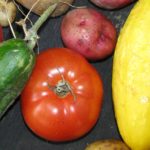
Summertime meal from the garden.
We don’t buy fertilizer. We make it from food scraps. Beans, squash, carrots, okra, chard, kale, lettuce, and tomatoes seem to jump from the compost-enrichened soil, and on many summer days everything we eat comes from the yard.
Then we return the little scraps from our garden vegetables to the chickens or compost pile, completing a cycle of abundance. We save money and spare the landfill unnecessary waste.
by Winding Pathways | Nov 2, 2017 | Chickens, Mammals, Nature
Below is a guest blog by Arianne Waseen about a visit by an opossum. Thanks, Arianne!
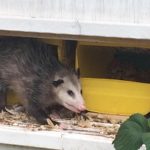
“Possum come aknockin’ at the door.”
“I went out in the afternoon a few weeks ago to look for eggs. I opened up the large door on the front of our coop, and in the nest box was something grey and furry and curled up in a little ball. My first thought was that it was a cat, but looking more closely it was definitely possum fur. I yelled and jumped a bit, and ran in to tell my husband and mother-in-law to come take a look. By the time we got back the possum had woken up. We opened up a little door we have at the back of the nest box and my mother in law encouraged the possum to jump down by prodding it with a broom from the front of the nest box. It jumped down and ran off. The opossum has come back a few times, and while it has not harmed our chickens, we are getting fewer eggs than we should be, and the possum has suspiciously glossy fur.”
by Winding Pathways | Aug 10, 2017 | (Sub)Urban Homesteading, Chickens
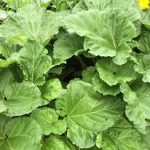
Rhubarb thrives in almost any soil.
About seven years ago we moved from a small house near downtown to Winding Pathways. We looked forward to our new home but didn’t want to leave some plants we’d cared for in the former yard. One was rhubarb. Fortunately, our move happened in early spring, so we were able to dig up dormant roots and plant them in our new yard. Now, they are thriving.
Rhubarb grows wild in parts of China but was domesticated centuries ago. It has been a valued garden and yard plant in temperate climates ever since. It is vigorous, attractive, and makes delicious food. Because it’s a perennial, it never needs replanting and pops out of the ground like magic each spring.
The plant thrives in rich soil and full sun but isn’t fussy. As long as it gets some daily sunshine and moisture, rhubarb grows well nearly everywhere. Few pests bother it, although deer eat the leaves in late summer or fall. Deer somehow resist toxins in rhubarb leaves that can sicken people. Fortunately, the stalks are delicious and nonpoisonous to humans.
Rhubarb is useful in landscaping and delicious in recipes.
We planted ours along a fence where it softens the straight line while giving us many pickings for the kitchen. We’ve never had rhubarb spread to places where we don’t want it. It is well behaved. Plant it where you want it and it likely will stay there.
When summer warmth arrives clumps of rhubarb often sent up a flower stalk. We pull out the flowering stalk, but other than that, the plants need little work. We are careful not to overharvest the stalks and give them plenty of time to regrow. Occasionally we do lightly harvest in summers of abundant rain and heat and enjoy recipes that include our own cherries and eggs from our chickens.
We prepare rhubarb one of several ways. The easy way is by pulling out a dozen, or so, stalks, adding the chopped off leaves to the compost bin, rinsing the stalks and cutting them into 1” chunks. We add sugar or honey to a pot full of stalk chunks and boil for about ten minutes with an occasional stirring. The resulting sauce is delicious on ice cream or pancakes or with plain yogurt. It’s good when added to oatmeal or just eaten as is. Rhubarb is tart and meshes well with ultra-sweet mulberries that ripen in late spring or nearly any other sweet fruit.
Two of our favorite pie and crunch recipes are Davenport Deluxe Pie by Joan Auterman and Rhubarb-Cherry Crunch from Clara Brown a long-ago friend from New England and Florida, Clara and Leon Brown were surrogate grandparents to a dear friend, Kathy Wentworth Taylor formerly of England. We love these best when all the major ingredients come from our garden, fruit trees and chickens.
Davenport Deluxe Pie
Preheat oven to 425°
1 large pie shell
3 cups chopped rhubarb in large bowl
Topping: ¼ cup flour, ¼ cup oatmeal, ¼ cup brown sugar, ¼ teaspoon each of baking powder and soda. ½ cup butter. Cut the butter into the above mixed ingredients. Set aside.
Mix: 2 cups sugar, 5 Tablespoons flour, 3 beaten eggs and stir in rhubarb. Add to pie shell.
Add topping. Bake 25 minutes at 425° and then 30 minutes at 350°
Cool before serving with rich vanilla ice cream.
Clara’s Rhubarb-Cherry Crunch
Preheat oven to 350°
Filling: Combine in a sauce pan and boil to thickness: 1 cup sugar, 1 cup water, 2 Tablespoons cornstarch. Add cherry pie filling. (if using real sour cherries drain well first so the acid does not thin the syrup.) Turn off heat and add 1 teaspoon almond flavor.
Bottom and crust: mix together 1 cup each of oatmeal, brown sugar and flour. Cut in ½ cup butter until pea sized mixture. Lightly grease bottom and sides of pan. Press ½ of this mixture on bottom of a pan.
Add rhubarb on top of the bottom crust. Add the boiled cherry pie filling. Top with remainder of crust. Bake at 350° for 45 minutes. Cool slightly and serve with rich vanilla ice cream.
-
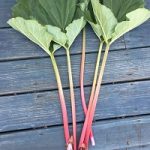
-
Rhubarb with leaves
-
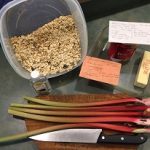
-
Key ingredients for crunch
-
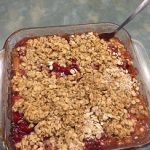
-
Crunch ready to serve
-
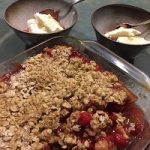
-
Mmmmmm! Warm with ice cream
by Winding Pathways | Jul 29, 2017 | Chickens, Labyrinths, Wonderment
What fun Winding Pathways and the Wapsi-Ana Garden Club had on July 26th! Charlene George gathered fifteen avid gardeners and close friends who followed “rooster” Rich around like chicks. They chatted about gardens and childhood experiences, explored the yard with a “Treasure Hunt”, learned about solar and rain barrels and took in the Phoenix Harmony Labyrinth. The members used their senses as they listened to various natural and human sounds. They judiciously tasted plants on their “Treasure Hunt”. Many verified that healthy lawns have diverse plants. Great descriptions of the phallic looking “Stinkhorn” fungus. Cicadas and Rattlesnake Master fascinated members. These amateur sleuths would have impressed Sherlock Holmes himself with their collective knowledge and hilarious manners.
Enjoy the photo gallery below of our morning with the Wapsi-Ana Garden Club. Come again!
-

-
Welcome to Winding Pathways!
-

-
Sharing on the deck before exploring the yard.
-

-
Small Groups finding interesting plants in the yard.
-
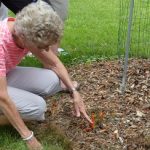
-
Rubbery, orange, unusual indeed!
-

-
Spot on descriptions!
-

-
Two intrepid explorers describe the taste of their find.
-
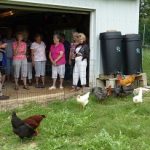
-
While chickens forage Rich shares about our projects.
-
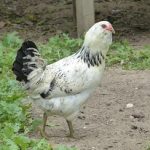
-
Checking out the Garden Club “chicks”.
-

-
All eyes on the garden.
-
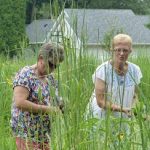
-
Summer’s fullness to explore.
-
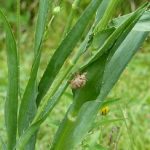
-
Cicada shell on Rattlesnake Master
-
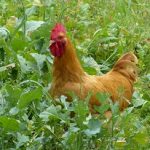
-
Cautiously eyeing the Garden Club “Chicks”.
by Winding Pathways | Jul 13, 2017 | Chickens, Labyrinths, Wonderment
What fun hosting Bankers Trust staff and clients and welcoming an out of town visitor to the Phoenix Harmony Labyrinth. Tuesday, July 11 was steamy and threatening storms. But, the hardy crew engaged in lively discussions and asked probing questions about the more simple lifestyle we embrace at Winding Pathways. Now, simple does not mean easy. Tending a large yard and five circuit labyrinth are work. Rewarding work. And, people are curious about chickens, managing small gardens, maximizing space, retaining water on our property, heating with wood, and creating diversity that welcomes wildlife. Topics like ways to save energy which saves money to be invested or used caught their attention. And questions on managing pests like ground hogs and deer. We touched on a lot and had a great time.
Go to 1080 Labyrinth for a photo album of the afternoon and evening.
Then, with storms obviously to the south showing off cumulus and anvil clouds but no threat, all walked the Phoenix Harmony Labyrinth. Mike T’s comment summed it all up. As he and Terri entered the center a cool breeze touched their faces. Mike paused and said, “I never want to leave.”
Thanks Terri Doyle for organizing and promoting!
by Winding Pathways | Jun 15, 2017 | Chickens, Hoover's Hatchery
If you missed our first Facebook Live watch this Hoover’s Hatchery video.
We chatted about Chickens and Gardens, Insects and Pests, Keeping Chickens cool in the summer and free from insect bites and predator invasions, and gave some tips on keeping water and feeders “poop” free.
We’re live with Winding Pathways talking with Hoover’s Hatchery about gardening with chickens!
Posted by Hoover’s Hatchery on Thursday, June 15, 2017
Join us next time.



















